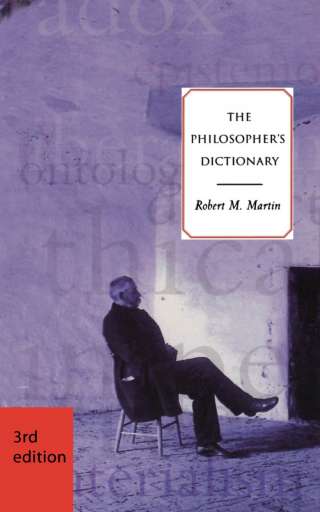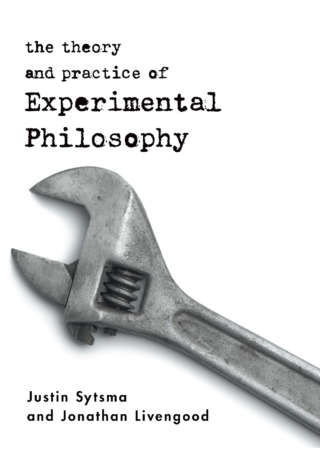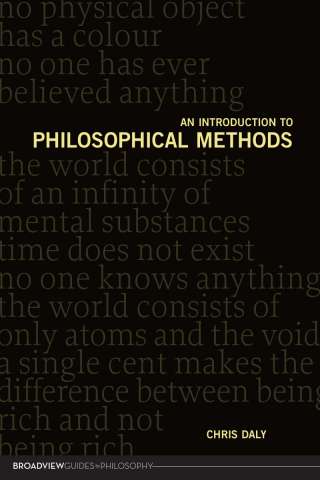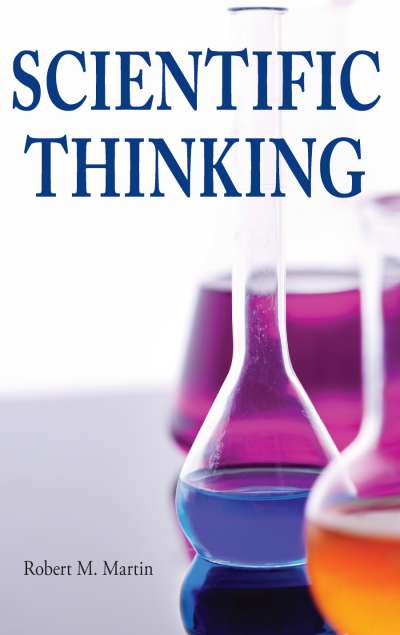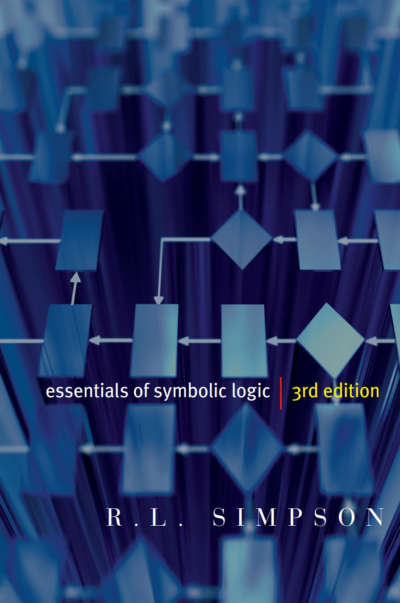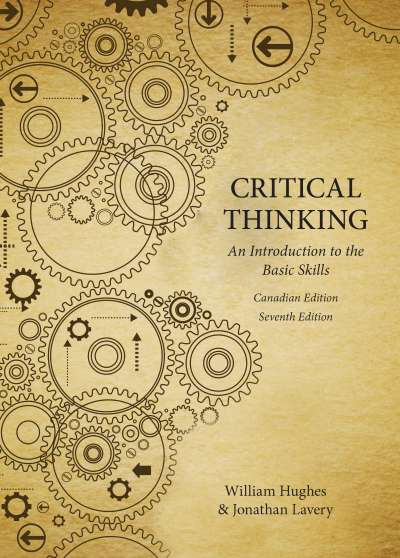More Precisely is a rigorous and engaging introduction to the mathematics necessary to do philosophy. Eric Steinhart provides lucid explanations of many basic mathematical concepts and sets out the most commonly used notational conventions. He also demonstrates how mathematics applies to fundamental issues in various branches of philosophy, including metaphysics, philosophy of language, epistemology, and ethics. This second edition adds a substantial section on decision and game theory, as well as a chapter on information theory and the efficient coding of information.
Comments
“More Precisely is a very useful tool for philosophers with a limited formal background who nevertheless aim to leave a lasting mark on the discipline.” — Nathan Salmon, Distinguished Professor of Philosophy, University of California, Santa Barbara
“Back in the day, philosophy graduate students might have been expected to complete a course in metalogic. It would be far better to complete a course that covers the topics presented here. This is excellent coverage of a wide range of mathematical ideas and techniques that are at the heart of many contemporary issues in metaphysics and epistemology.” — F. Thomas Burke, University of South Carolina
COMMENTS ON FIRST EDITION
“[More Precisely] addresses a need by giving an elementary presentation of a number of technical concepts used in philosophy, which previously were not collected together. It should be especially useful for students preparing for graduate work whose undergraduate training is likely to have skipped over at least some of the concepts that the book covers. The material in each chapter is presented in a very clear and engaging way, without presupposing any background beyond basic high school mathematics.” — Susan Vineberg, Wayne State University
“This is the book I wish I had when I was learning philosophy. It does an excellent job introducing students to the formal tools that philosophers use in an accessible yet rigorous way. From set theory to possible words semantics to probability theory to the mathematics of infinity, all the key concepts are taught in a way that will provide students the foundation for being solid philosophers. Moreover, the concepts are taught in an engaging way, and frequent examples are given to explain why these formal notions are philosophically relevant. I’m going to ask all my incoming graduate students to read this book. And there’s enough material in here that most philosophy professors could learn something from the book as well.” — Bradley Monton, University of Colorado, Boulder
“This is a splendid and innovative book. It explains accurately and accessibly a wide range of technical topics frequently drawn upon in philosophy. Wonderfully informative and clear, this book is a lifeline for students at undergraduate or graduate level.” — Chris Daly, University of Manchester
“This is a great resource! Philosophers have always used the tools of mathematics to make their claims clearer and more precise, even more so since the end of the nineteenth century. Until now we haven’t had a systematic way to acquire those tools. Steinhart’s book remedies the situation, presenting the fundamental ideas thoroughly and comprehensively. Highly recommended for anyone getting into the serious study of philosophy.” — Anthony Dardis, Hofstra University
Preface
1. SETS
- Collections of Things
- Sets and Members
- Set Builder Notation
- Subsets
- Small Sets
- Unions of Sets
- Intersections of Sets
- Difference of Sets
- Set Algebra
- Sets of Sets
- Union of a Set of Sets
- Power Sets
- Sets and Selections
- Pure Sets
- Sets and Numbers
- Sums of Sets of Numbers
- Ordered Pairs
- Ordered Tuples
- Cartesian Products
2. RELATIONS
- Relations
- Some Features of Relations
- Equivalence Relations and Classes
- Closures of Relations
- Recursive Definitions and Ancestrals
- Personal Persistence
- 6.1 The Diachronic Sameness Relation
6.2 The Memory Relation
6.3 Symmetric then Transitive Closure
6.4 The Fission Problem
6.5 Transitive then Symmetric Closure
- Closure under an Operation
- Closure under Physical Relations
- Order Relations
- Degrees of Perfection
- Parts of Sets
- Functions
- Some Examples of Functions
- Isomorphisms
- Functions and Sums
- Sequences and Operations on Sequences
- Cardinality
- Sets and Classes
3. MACHINES
- Machines
- Finite State Machines
- 2.1 Rules for Machines
2.2 The Careers of Machines
2.3 Utilities of States and Careers
- The Game of Life
- 3.1 A Universe Made from Machines
3.2 The Causal Law in the Game of Life
3.3 Regularities in the Causal Flow
3.4 Constructing the Game of Life from Pure Sets
- Turing Machines
- Lifelike Worlds
4. SEMANTICS
- Extensional Semantics
- 1.1 Words and Referents
1.2 A Sample Vocabulary and Model
1.3 Sentences and Truth-Conditions
- Simple Modal Semantics
- 2.1 Possible Worlds
2.2 A Sample Modal Structure
2.3 Sentences and Truth at Possible Worlds
2.4 Modalities
2.5 Intensions
2.6 Propositions
- Modal Semantics with Counterparts
- 3.1 The Counterpart Relation
3.2 A Sample Model for Counterpart Theoretic Semantics
3.3 Truth-Conditions for Non-Modal Statements
3.4 Truth-Conditions for Modal Statements
5. PROBABILITY
- Sample Spaces
- Simple Probability
- Combined Probabilities
- Probability Distributions
- Conditional Probabilities
- 5.1 Restricting the Sample Space
5.2 The Definition of Conditional Probability
5.3 An Example Involving Marbles
5.4 Independent Events
- 6. Bayes Theorem
- 6.1 The First Form of Bayes Theorem
6.2 An Example Involving Medical Diagnosis
6.3 The Second Form of Bayes Theorem
6.4 An Example Involving Envelopes with Prizes
- 7. Degrees of Belief
- 7.1 Sets and Sentences
7.2 Subjective Probability Functions
- 8. Bayesian Confirmation Theory
- 8.1 Confirmation and Disconfirmation
8.2 Bayesian Conditionalization
- 9. Knowledge and the Flow of Information
6. INFORMATION THEORY
- Communication
- Exponents and Logarithms
- The Probabilities of Messages
- Efficient Codes for Communication
- 4.1 A Method for Making Binary Codes
4.2 The Weight Moving across a Bridge
4.3 The Information Flowing through a Channel
4.4 Messages with Variable Probabilities
4.5 Compression
4.6 Compression Using Huffman Codes
- Entropy
- 5.1 Probability and the Flow of Information
5.2 Shannon Entropy
5.3 Entropy in Aesthetics
5.4 Joint Probability
5.5 Joint Entropy
- Mutual Information
- 6.1 From Joint Entropy to Mutual Information
6.2 From Joint to Conditional Probabilities
6.3 Conditional Entropy
6.4 From Conditional Entropy to Mutual Information
6.5 An Illustration of Entropies and Codes
- Information and Mentality
- 7.1 Mutual Information and Mental Representation
7.2 Integrated Information Theory and Consciousness
7. DECISIONS AND GAMES
- Act Utilitarianism
- 1.1 Agents and Actions
1.2 Actions and Their Consequences
1.3 Utility and Moral Quality
- From Decisions to Games
- 2.1 Expected Utility
2.2 Game Theory
2.3 Static Games
- Multi-Player Games
- 3.1 The Prisoner’s Dilemma
3.2 Philosophical Issues in the Prisoner’s Dilemma
3.3 Dominant Strategies
3.4 The Stag Hunt
3.5 Nash Equilibria
- The Evolution of Cooperation
- 4.1 The Iterated Prisoner’s Dilemma
4.2 The Spatialized Iterated Prisoner’s Dilemma
4.3 Public Goods Games
4.4 Games and Cooperation
8. FROM THE FINITE TO THE INFINITE
- Recursively Defined Series
- Limits of Recursively Defined Series
- 2.1 Counting through All the Numbers
2.2 Cantor’s Three Number Generating Rules
2.3 The Series of Von Neumann Numbers
- Some Examples of Series with Limits
- 3.1 Achilles Runs on Zeno’s Racetrack
3.2 The Royce Map
3.3 The Hilbert Paper
3.4 An Endless Series of Degrees of Perfection
- Infinity
- 4.1 Infinity and Infinite Complexity
4.2 The Hilbert Hotel
4.3 Operations on Infinite Sequences
- Supertasks
- 5.1 Reading the Borges Book
5.2 The Thomson Lamp
5.3 Zeus Performs a Super-Computation
5.4 Accelerating Turing Machines
9. BIGGER INFINITIES
- Some Transfinite Ordinal Numbers
- Comparing the Sizes of Sets
- Ordinal and Cardinal Numbers
- Cantor’s Diagonal Argument
- Cantor’s Power Set Argument
- 5.1 Sketch of the Power Set Argument
5.2 The Power Set Argument in Detail
5.3 The Beth Numbers
- The Aleph Numbers
- Transfinite Recursion
- 7.1 Rules for the Long Line
7.2 The Sequence of Universes
7.3 Degrees of Divine Perfection
Further Study
Glossary of Symbols
References
Index
Eric Steinhart is a professor of philosophy at William Paterson University. He is the author of Your Digital Afterlives: Computational Theories of Life after Death (Palgrave Macmillan, 2014), On Nietzsche (Wadsworth, 1999), and The Logic of Metaphor: Analogous Parts of Possible Worlds (Kluwer Academic, 2001).
—A primer on the mathematical and formal aspects of philosophy, including set theory, relations, functions, probability, and more
—Suitable as a course text or as supplemental reading for students who wish to fill gaps in their technical knowledge
—This edition adds chapters on decision theory and information theory
—Diagrams and tables are used to illustrate and organize technical ideas
—Supplemental exercises and solutions are provided on a companion website
This book comes with access to a companion website that hosts exercises, answer keys, and supplements.
For a sample chapter of More Precisely, Second Edition, click here. (opens as a PDF).


